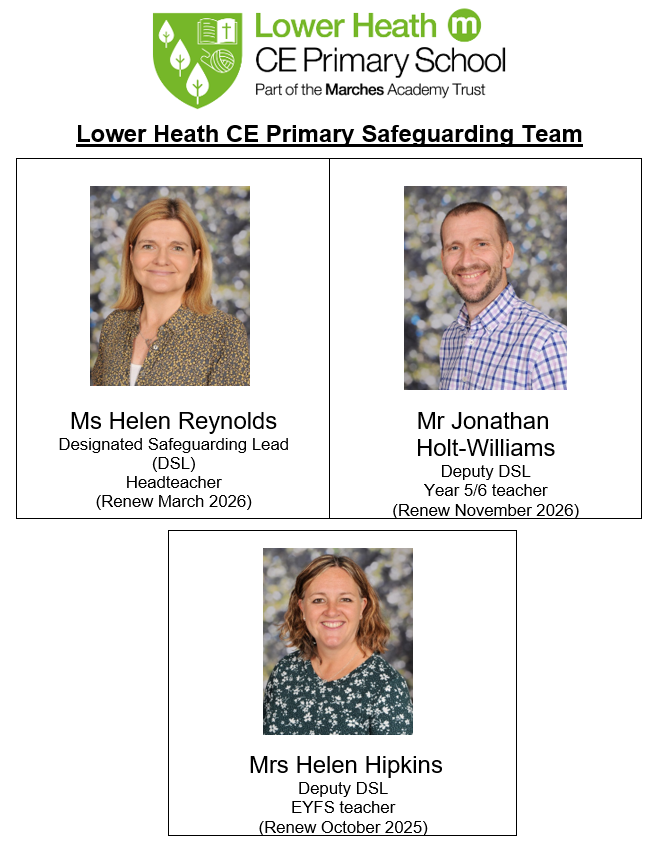Safeguarding
Safeguarding is the action that is taken to promote the welfare of children and protect them from harm.
Safeguarding means:
- protecting children from abuse and maltreatment
- preventing harm to children’s health or development
- ensuring children grow up with the provision of safe and effective care
- taking action to enable all children and young people to have the best outcomes
Child protection is part of the safeguarding process. It focuses on protecting individual children identified as suffering or likely to suffer significant harm. This includes child protection procedures which detail how to respond to concerns about a child.
At Lower Heath, we take safeguarding very seriously; the safety of our pupils is the most important thing.
We believe strongly in:
- empowerment – people should be supported to make their own decisions based on the best possible information
- prevention – it is better to take action before harm occurs
- proportionality – what we do should be proportionate to the risk: we don’t want to be over-protective if the risk is low, as this in itself can disadvantage people and deprive of them of the opportunity to make their own decisions
- protection – those in greatest need require our support and protection
- partnership – safeguarding is about different people, professions, groups and communities working together to cover all the angles in preventing, detecting and reporting neglect and abuse
- accountability – as in all our activities, we need to be accountable for what we do in safeguarding
Safeguarding pupils is the responsibility of all school staff. Staff will maintain an attitude of ‘it could happen here’ and always act in the best interests of the pupil when they are concerned about the child’s welfare. If staff have any concerns about a pupil’s welfare, they will act on them immediately. Staff will follow the reporting procedure set out in our safeguarding policies and procedures.
Lower Heath’s Designated Safeguarding Lead (Helen Reynolds), or our deputies (Helen Hipkins and Jonathan Holt-Williams), are always available to discuss safeguarding concerns – if they are not available, this should not delay appropriate action being taken. In these cases, staff members should speak to the SLT and/or take advice from LA children’s social care. All safeguarding concerns, discussions and decisions are recorded on CPOMS.
We ask that all staff and visitors alike have a responsibility for safeguarding our pupils. To ensure this we ask the following:
- Switch off your mobile phone/device. Visitors will be required to hand these in for safe keeping at the main reception. Staff should ensure these are not in classrooms
- Do not take photos, videos or sound recordings of any pupils unless you have sought permission from the school
- If you are working with a child, please ensure the class teacher is aware of this, where you are working and approximately how long for
- If you are working with a child, please do so in a space that is open, or have an open door or visible by others through a window
If you have a concern about a child please pass this on to the DSLs (Designated Safeguarding Leads). These are Helen Reynolds (Headteacher), Helen Hipkins (EYFS lead) and Jonathan Holt-Williams (Year 5/6 Class Teacher).
If you have a concern about another adult in school, please ask to speak to Helen Reynolds (Headteacher).
Always share concerns with school staff, no matter how small they may appear, and don’t keep them to yourself.
If a child says something to you that you think could be a safeguarding concern, act as above, and if possible write down what was said immediately. Listen to the child, do not question them or promise them that it will remain confidential between the two of you.
The flowchart below sets out the process that should be followed when reporting a safeguarding concern.
Please note policies around Safeguarding are in the policies section.


Safeguarding

